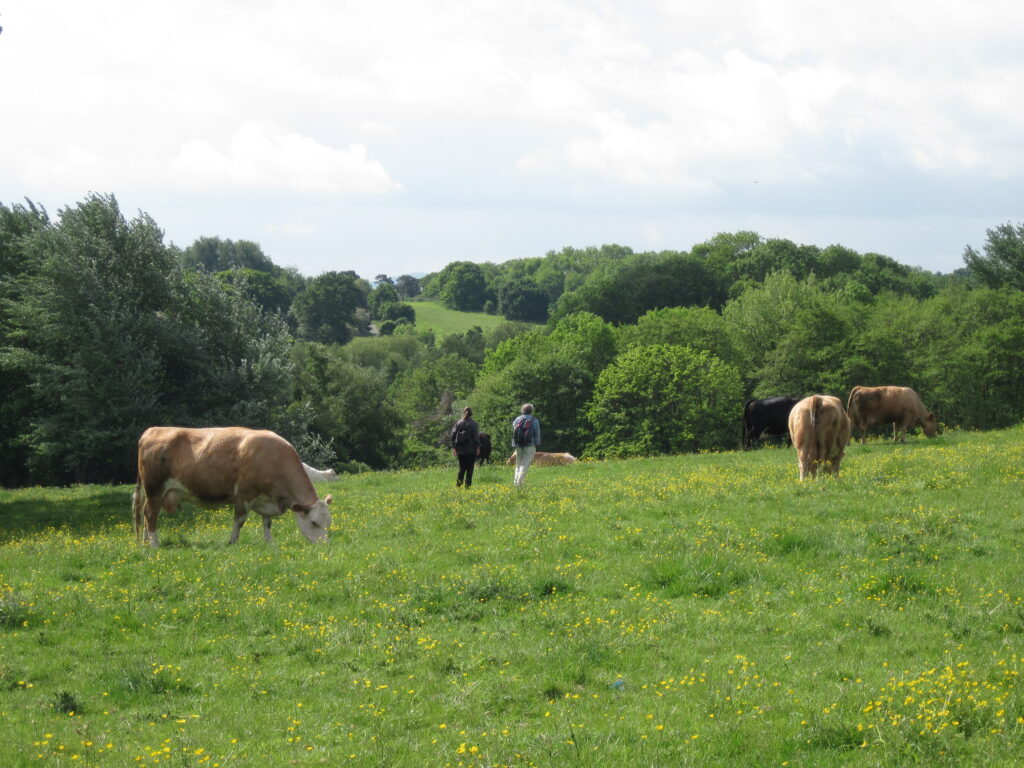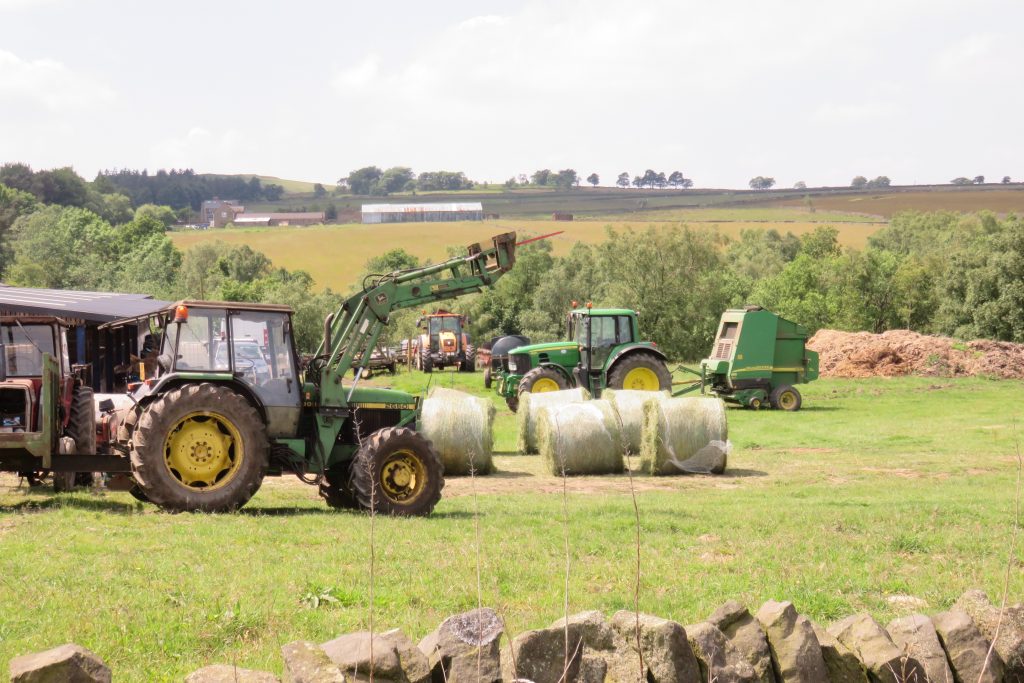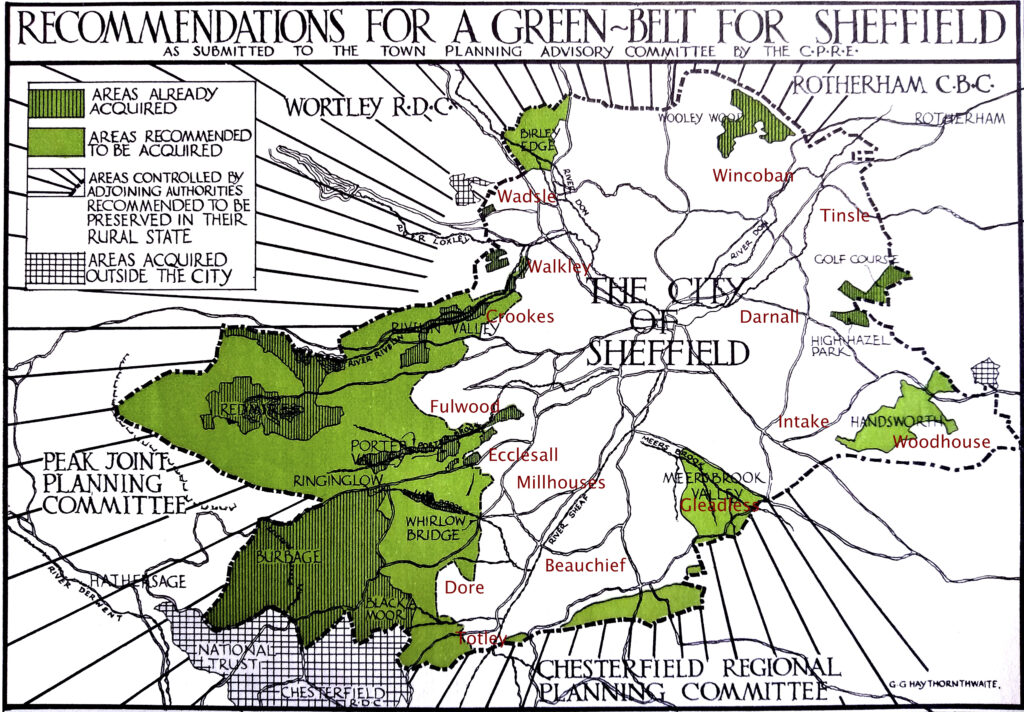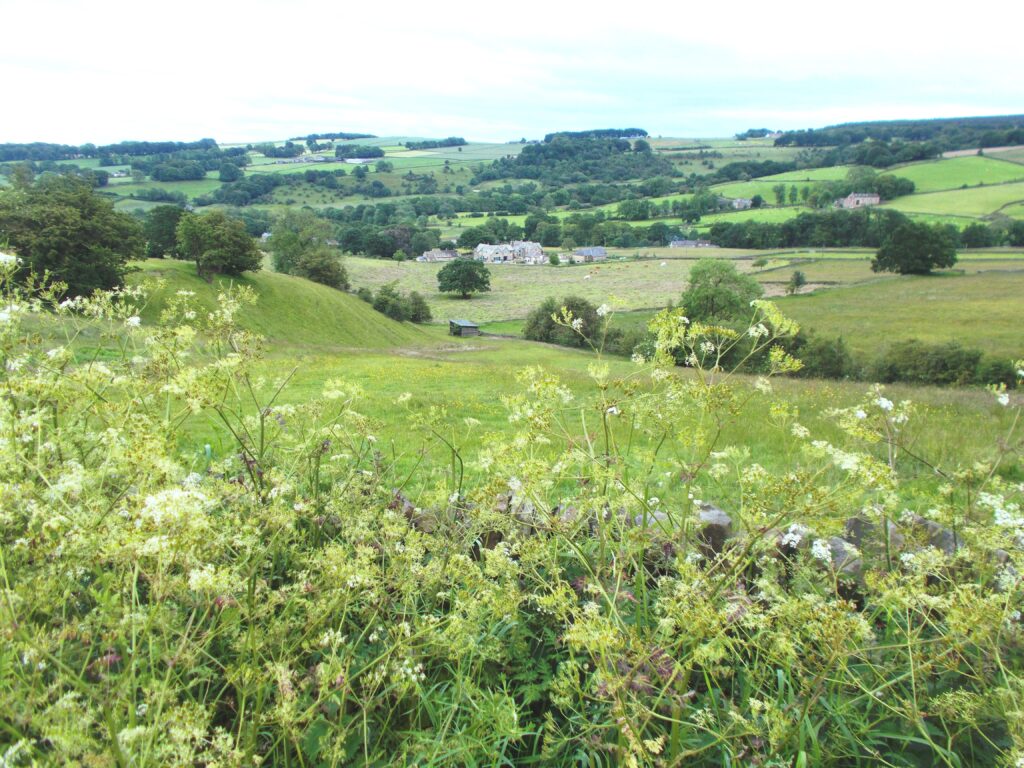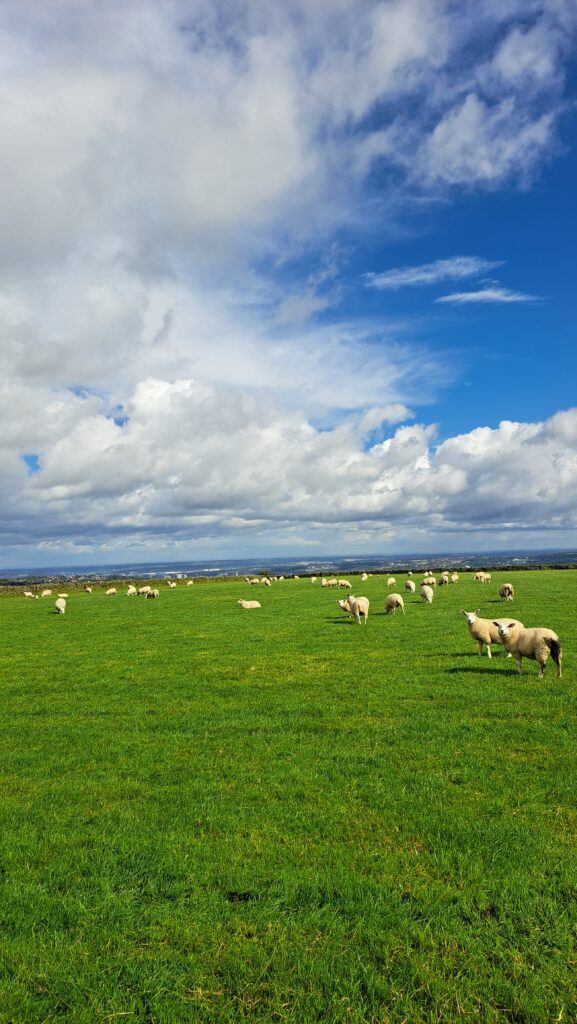The Green Belt

CPRE Peak District and South Yorkshire’s pioneering efforts to preserve the countryside played a crucial role in achieving Sheffield’s Green Belt designation – the first of its kind in England.
What is the Green Belt?
The Green Belt is a national planning policy which is applied in Local Plans to prevent most types of development around certain towns and cities. Since the pioneering days of Ethel and Gerald Haythornwaite Green Belt policy has been used by Local Planning Authorities like Sheffield City Council to control the pattern of large urban areas and prevent the urban areas expanding ever outwards into valued countryside. Green Belt does not just mean greenfield, and Green Belt does not just protect the beautiful and green, it also protects the land necessary to achieve its five purposes.
The purposes of the Green Belt:
- to check the unrestricted sprawl of large built-up areas;
- to prevent neighbouring towns merging into one another;
- to assist in safeguarding the countryside from encroachment;
- to preserve the setting and special character of historic towns; and
- to assist in urban regeneration, by encouraging the recycling of derelict and other urban land.
Please donate
Your Peak District. Your South Yorkshire. Your countryside. Your support matters.

Where is the Green Belt?
You can view the areas of Green Belt in England on this interactive map
View England's Green Belt landWhy is it important?
Green Belt allows local authorities to have a say in where new development is and isn’t built, giving them the ability to influence the growth of urban areas in a way that better achieves social, economic and environmental objectives in a balanced ‘sustainable’ manner and avoids a free for all.
The land within Green belt is a space around large urban areas (the urban edge) which is used for agriculture, clean air, space for outdoor pursuits and recreation, space for nature and its recovery, natural flood management and other beneficial land uses. The value of areas of Green Belt to these beneficial land uses does not however equate to how well protected they are by the Green Belt policy. The Green Belt policy better protects the land which is judged to meet the five purposes strongly.
Useful resources
Why is the Green Belt under threat?
Population and economic growth
There is an urgent need for new housing in England and national planning policy has been changed to require local authorities to meet that need and many will need to prepare new plans to do so, including looking to see if Green Belt land is now needed and should be released for housing. The Government has also changed national planning policy to weaken Green Belt protections by defining some land within Green Belt as ‘Grey Belt’ and making it easier in some ways to get permission to build there, especially where Government thinks that not enough house building is happening quickly enough.
Currently Sheffield’s Local Plan is out of date and house building is not happening at the scale or pace required by Government. In this situation the new national planning policy provides developers with an opportunity to build in Green Belt. It is therefore important for SCC to get an up to date plan as soon as possible and to find enough deliverable sites for new housing to avoid unplanned housing developments. SCC currently are progressing a new Local Plan which is now being examined by Government appointed inspector’s but it is not past the post yet.
What might this mean for Sheffield’s Green Belt and its emerging Local Plan?
Release of Green Belt land
The Government appointed Inspectors whom are currently examining the emerging new Local Plan have reached an initial verdict contained in this letter. They conclude that around 3529 more homes are needed than planned for, and also around 53 hectares more employment land. This changes the balancing act SCC must make to achieve a more sustainable pattern of development whilst allowing for more housing and jobs. The inspectors have concluded that exceptional circumstances for the release of Green Belt land around Sheffield have been demonstrated and suggest that SCC should also look ahead and identify Grey Belt sites and sites that stand more chance of being built in the next five years. It is likely to mean more release of Green Belt land for housing and employment development. More sites than are currently planned for in the existing Local Plan and also more than planned for in the emerging new Local Plan.
Where might these new housing site allocations be?
Greenfield, Green Belt
At a meeting on Wednesday 30th April 2025, the City Council’s Strategy and Resource Committee voted in favour of proposals to release 3.6% of the Green Belt for housing and employment development. Use our interactive map to find out where the proposed developments are.
You can see what scoring SCC has given sites and land parcels against Green Belt purposes in:
- The September 2020 Green Belt Review
- The updated 2024 Green Belt Review
- The Draft Sheffield Plan Green Belt Review Update (November 2024)
You can also see where the higher property sale prices are in Sheffield in figure 4.4 of the Sheffield and Rotherham Strategic Housing Market Assessment 2018.
What can people do about this?
Have your say on the Sheffield Green Belt in May.
Sheffield City Council recently discussed plans to release Green Belt land for development at a full council meeting held on Wednesday 14th May 2025.
The vote resulted in 45 councillors supporting the plan, 31 opposing it, and 4 choosing to abstain.
If you missed, you can watch the full council meeting held on Wednesday 14 May 2025 at 2:00pm
The next step in the process is a public consultation, which will run from 29th May and continue until 11th July 2025.
- The public will be able to comment on the options, albeit the inspectors will only take into account any comments that have implications for the soundness of the emerging new Local Plan.
- You can read more about the Local Plan process and the planning issues they deal with.
- You can also message your MP, Local Councillors and the South Yorkshire Mayor Oliver Coppard to give your views.
It is anticipated that the Plan will be adopted in July 2026.



